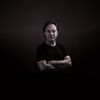Why The House of Machines is the home of holistic marketing wizardry
Why a Cape Town lifestyle brand is a leading light in the art and science of holistic brand management.
It's easy for a big company to build a great brand; they just throw tons of cash at the challenge. This doesn't necessarily mean that they do a good job of it though, rather they have the money to completely wallpaper everyone's reality with their messaging and ultimately force a semblance of a solution on us all.
Smaller brand? Well, by necessity, they need to be a lot more shrewd and discerning when it comes to strategy.

